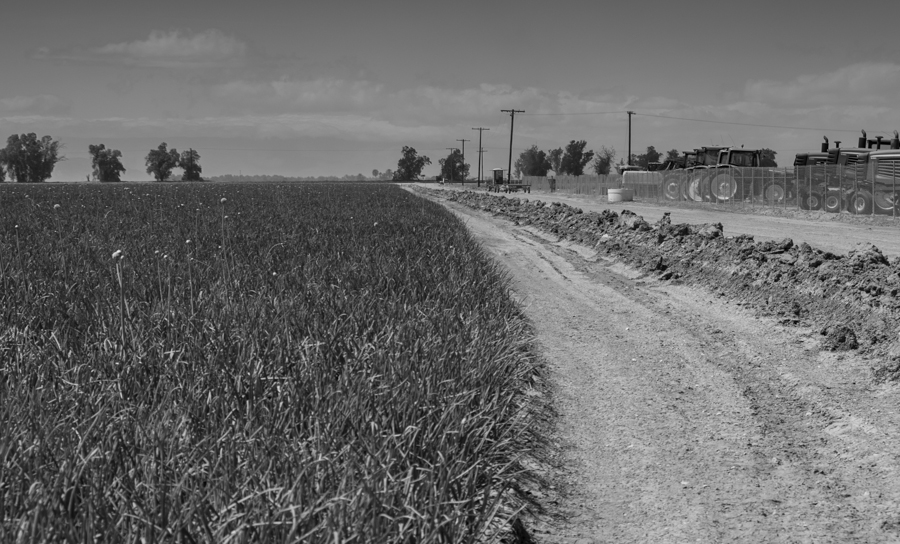
In ag-urban water transfers, does the tractor dealer lose out? Onion field and tractor dealership, Imperial Valley, March 2014, by John Fleck
More from in Brian Devine’s excellent series on the tradeoffs, some quite hidden, in the agricultural-to-urban water transfers that seem the inevitable path forward in the western United States:
To many rural communities, water is more than just money. Irrigation is the lifeblood of rural communities’ economies, to be sure, but it is also a key strand in the fabric of community identities and the self-determination of rural places.
And this (“AMI” is “agricultural to municipal-industrial”):
Third parties – the employees and neighbors of those who choose to sell water, and who receive no cut of the sale price – therefore bear most of the economic burdens of AMI transfers. Removing the primary economic driver from these communities has little to no effect on productivity from a state or national accounting standpoint, but it can have a cascading effect on local capacity. Unsurprisingly, the effects are smaller when the receiving area and the origin are in the same economic region. This case is not uncommon as suburbs expand into and even “leapfrog” over agricultural operations. But the opposite case, where water is transferred many miles away along a stream, or even through a tunnel into entirely different watersheds, represents a significant fission of costs and benefits.
I tend to be optimistic about the role of ag-urban transfers, but these third-party effects can’t be easily waved away.

If you’re going to consider economic third party impacts (e.g., fewer restaurant meals or even ag jobs), then you should contrast the “loss” from moving ag water to the “loss” of closing a factory in a company town. THEN you should decide if it’s ok to stop unprofitable factories from closing — and unprofitable Ag from ceasing.
David – I was having lunch with an economist friend Friday who offered much the same point. My response was that the factory and the ag water situations are different (at least in some cases) because of where the decision-making authority lies. Ag water often is managed by boards elected by many of those third parties (see for example Imperial). They therefore have strong incentives to take those third party impacts into account. This is an element the unproductive factory example lacks, which is why they remain different. Thus, independent of the equity/social justice arguments (which, I think, remain interesting arguments), as a practical matter in these situations you’re not going to make the deal work without taking third party impacts into account.